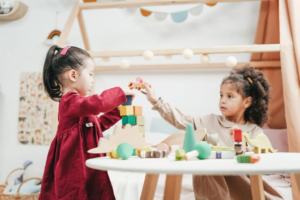
Picture from Unsplash
According to Forbes, everyone wants to stay in a calming environment that feels safe. A home is a crucial environment where kids spend most of their early years. Some negative aspects can make your environment stressful and dangerous. It can be more devasting if you have a child with autism. You can make a few adjustments to enable a kid with autism to adapt to the environment.
The ideas below can help to create a better environment for kids with autism.
1. ABA Therapy Services
A RBT mock exam online is what Registered Behavior Technicians (RBTs) use to carry out behavior analysis. Thus, RBT professionals assist board-certified behavior analysts (BCBAs) in conducting ABA therapy.
Applied Behavior Analysis (ABA) is one of the most effective autism therapies. For example, ABA therapy can boost language and communication skills among autistic kids. It also contributes to the advancement of their motor and social skills.
Nevertheless, in some quarters, ABA therapy is considered more focused on behavior alone. Thus, other therapies, like developmental therapy, may also be administered. Developmental therapy focuses on communication, interactivity, and emotional growth.
ABA therapy is aimed at enhancing positive behavior while discouraging inappropriate behavior. ABA therapy programs can help children with autism as follows:
- Promotes language and communication skills
- Reduces unsuitable behaviors
- Enhances attention, memory, and social skills
More importantly, ABA is a flexible therapy. It can be modified to suit the special needs of each child with autism. Furthermore, it can be administered in school and home environments.
2. Use of Visual Supports
Several visuals, like video modeling and pictures, can be used among visual learners. Visuals are critical because they ensure information stays for a long. An ATN Visual Supports Tool Kit is essential in this process. The kit provides a stepwise introduction to visual supports that autistic kids can easily understand.
However, you should provide a conducive place where they can learn to use the kit. A room with calming objects or activities could be appropriate.
3. Provide a Cool-Down Room
At times your autistic child can become aggressive in certain situations. You should create a calming room to reduce the risks of such outbursts. You can remodel a spare room in your home to act as a safe space for your child. It becomes their space for relaxation whenever faced with a situation that can cause aggression.
Such a room is equipped with soft objects. Besides, ensure furniture is kept far from the windows. So your autistic child won’t easily climb out and get injured. In addition, you can provide calming objects or situations like soothing music and sensory objects.
4. Utilize Colors They Like
Kids with autism may tend to like certain colors. It might be bright or bold colors that draw their attention. But we know that colors have a great influence on mood. So, you can use colors that attract your child generously around the home. For instance, the spaces your child stays in most of the time, like their bedroom.
Indeed, children with autism perceive colors more intensely compared to other children. Therefore, proper use of color at home can enhance your child’s positive feelings.
Though, it would be best if you were careful to avoid over-stimulation due to the tone of color used. Low-toned colors are preferred, especially in your child’s bedroom. For instance, most autistic children find the color blue calming, while red is extremely arousing.
5. Art Therapy for Autism
Therapists can use creative art to boost the imagination and communication skills of children with autism. Besides, creative art therapy can promote your autistic child’s mental, emotional, and physical well-being. Through art therapy, children with autism can express their feelings freely.
Art therapy can help children with autism in the following ways:
- Increases imagination and abstract thinking
- Enhances development and helps build visual/spatial skills
- Assists them in building stronger relationships
- Promotes communication through creative expression
As a parent to a child with autism, you should identify your child’s creative art of interest. It can be music, drama, or visual arts. Through art therapy, children with autism can communicate and express themselves non-verbally.
Concluding Remarks
Children born with autism are not disabled, but rather they are abled differently. When parenting a child with autism, you can adjust the environment to suit their needs.


